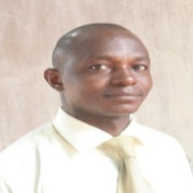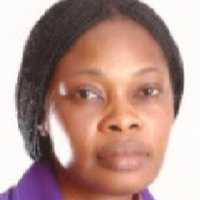International Journal of Intelligent Systems and Applications (IJISA)
IJISA Vol. 13, No. 3, 8 Jun. 2021
Cover page and Table of Contents: PDF (size: 303KB)
Application of Levenberg-Marguardt Algorithm for Prime Radio Propagation Wave Attenuation Modelling in Typical Urban, Suburban and Rural Terrains
Full Text (PDF, 303KB), PP.35-42
Views: 0 Downloads: 0
Author(s)
Index Terms
Propagation terrains, signal strength, Parametric modelling, Propagation loss, Gauss-Newton algorithm, ITU-R P.525 model, initial guess parameters, Levenberg-Marquardt algorithm
Abstract
The desire to achieve an adaptive prognostics regression learning processes of physical and empirical phenomenon is a complex task and open problem in radio frequency telecommunication engineering. One key method to solving such complex task or problems is by means of numerical based optimisation algorithms. The Levenberg–Marquardt algorithm (LMA) is an efficient nonlinear parametric machine learning based modelling algorithm with optimal, fast, and accurate convergence speed. This paper proposes and demonstrates the real-time application of the LMA in developing a log-distance like propagation loss model based on received radio strength measurements conducted over deployed long term evolution (LTE) eNodeBs antennas in three different propagation areas. The LTE eNodeB signal propagation areas were selected to reflect typical urban, suburban and rural terrains which represent urban, suburban and rural terrains. The heights of the three eNodeBs are 30, 28 and 32m respectively and each operate at 2.6GHz carrier frequency with 10MHz channel bandwidths. The resultant outcome of the proposed propagation loss modelling using LMA indicates a high approximation efficacy over the popular Gauss-Newton algorithm (GNA) modelling method, which has been used to benchmark the process. Precisely, the developed propagation loss model using LMA method attained lower maximum absolute error (MABE) of 7.73, 14.57and 10.53 for urban, suburban and rural terrains compared to the ones developed by GNA which yielded 15.19, 16.59 and 13.05 MABE values. The improved approximation performance of the LMA over the GNA can be ascribed to its capacity handle multiple free parameters and attain optimum solution irrespective of the selected values of initial guess parameters.
Cite This Paper
Joseph Isabona, Divine O. Ojuh, "Application of Levenberg-Marguardt Algorithm for Prime Radio Propagation Wave Attenuation Modelling in Typical Urban, Suburban and Rural Terrains", International Journal of Intelligent Systems and Applications(IJISA), Vol.13, No.3, pp.35-42, 2021. DOI:10.5815/ijisa.2021.03.04
Reference
[1]V.C. Ebhota, Isabona, J, and Srivastava, V.M. ''Modelling, simulation and analysis of signal path loss for 4G cellular network planning'', Journal of Engineering and Applied Sciences (JEAS), Vol. 13 (4), pp. 235-240.
[2]J. Isabona and D.O. Ojuh. ''Adaptation of Propagation Model Parameters toward Efficient Cellular Network Planning using Robust LAD Algorithm'', I.J. Wireless and Microwave Technologies, 2020, vol. 10, No.5, pp. 13-24.
[3]J. Isabona and G.P. Isaiah. ''Computation and Verification of Propagation Loss Models based on Electric Field Data in Mobile Cellular Networks'', Australian Journal of Basic and Applied Sciences, vol. 9(31), pp. 280-285, 2015.
[4]J. Isabona. ''Wavelet Generalized Regression Neural Network Approach for Robust Field Strength Prediction, Wireless Personal Communication'' https://doi.org/10.1007/s11277-020-07550-5, 2020.
[5]B.S. Castro, M.R. Pinheiro, G.P. Cavalcante, I.R. Gomes, O.D.O. Carneiro. ''Comparison between known propagation models using least squares tuning algorithm on 5.8 GHz in Amazon region cities''. Journal of Microwaves, Optoelectronics and Electromagnetic Applications, 10 (1), 106-113, 2011.
[6]J. Isabona and S. Azi. ''Optimised Walficsh-Bertoni Model for Pathloss Prediction in Urban Propagation Environment''. International Journal of Engineering and Innovative Technology (IJEIT), vol. 2 (5), pp. 14-20, 2012.
[7]F. Ikegami, and S. Yoshida. Analysis of multipath propagation structure in urban mobile radio environments. IEEE Transactions on Antenna and Propagation, vol. 28(4), pp.531-537, 1980.
[8]M. Hata, Empirical formula for propagation loss in land mobile radio services. IEEE Transactions on Vehicular Technology, vol. 29(3), pp.317–325, 1980.
[9]Y. Okumura, E. Ohmori, T. Kawano, and K. Fukuda, "Field Strength and Its Variability in VHF and UHF Land-Mobile Radio Service," Review of the Electrical Communication Laboratory, 16, pp. 825-873, September-October, 1968.
[10]J. Walfisch, and H.L. Bertoni. A theoretical model of UHF propagation in urban environments. IEEE Transactions on antennas and propagation, vol.36 (12), pp.1788-1796, 1988.
[11]COST Action231, ˝Digital mobile radio towards future generation system, final report,˝tech. rep., European communities, EUR 18957,1999
[12]R. Mardeni and Y. P. Y. P. Lee ''The Optimization of Okumura’s Model for Code Division Multiple Access (CDMA) System in Malaysia''. European Journal of Scientific Research, vol.45 (4), pp.508-528, 2010.
[13]E. AarnæS, and S. Holm. ''Tuning of empirical radio propagation models effect of location accuracy''. Wireless Personal Communications, vol.30 (2-4), pp.267–281, 2004.
[14]J. Isabona and C.C. Konyeha. ''Urban Area Path loss Propagation Prediction and Optimisation Using Hata Model at 800MHz''. IOSR Journal of Applied Physics (IOSR-JAP), vol. 3 (4), 8-18, 2013.
[15]J. Isabona, and G.P. Isaiah. G.P. ''CDMA2000 Radio Measurements at 1.9GHz and Comparison of Propagation Models in Three Built-Up Cities of South-South, Nigeria'', American Journal of Engineering Research (AJER), Vol. 2, Issue-05, pp-96-106, 2013.
[16]J. Isabona and S.O. Azi. ''Enhanced Radio Signal Loss Prediction with Correction Factors for Urban Streets in the IMT-2000 Band'', Elixir Space Science, vol. pp.15958-15962, 2013.
[17]N.N. Chimaobi, C.C. Nnadi, and A.J. Nzegwu, ''Comparative Study of Least Square Methods for Tuning Erceg Pathloss Model''. American Journal of Software Engineering and Applications. Vol.6 (3), pp. 61-66, 2017.
[18]Castro-Hernandez D., Paranjape R. Local Tuning of a Site-Specific Propagation Path Loss Model for Microcell Environments, International Journal of Wireless Personal communications, 91 (2), 709-728, 2016.
[19]A. Akinbolati, and O. J. Agunbiade, "Assessment of Error Bounds for Path Loss Prediction Models for TV White Space Usage in Ekiti State, Nigeria", International Journal of Information Engineering and Electronic Business, Vol.12, No.3, pp. 28-39, 2020.
[20]W. H. Lai, S. L. Kek and K.G. Tay, "Solving Nonlinear Least Squares Problem Using Gauss-Newton Method''.IJISET - International Journal of Innovative Science, Engineering & Technology, Vol. 4 Issue 1, pp. 258-262, 2017.
[21]H.B. Nielson, ''Damping Parameter In Marquardt’s Method, Technical Report IMM-REP-1999-05'', Dept. of Mathematical Modeling, Technical University Denmark.
[22]A. Bjorck. Numerical methods for least squares problems, SIAM, Philadelphia, 1996.
[23]K. Levenberg. “A Method for the Solution of Certain Non-Linear Problems in Least Squares”. The Quarterly of Applied Mathematics, vol. 2: 164-168 (1944).
[24]D. Marquardt, Journal of the Society for Industrial and Applied Mathematics, vol.11, pp. 431–441, 1963.
[25]W. Press, S. A. Teukolsky, W. T. Vetterling, B. P. Flannery, Numerical recipes: the art of scientific computing,, Cambridge University Press, 2007.
[26]I.B. Oluwafemi, and O. J. Femi-Jemilohun. ''Propagation Profile and Strength Variation of VHF Signal in Ekiti State Nigeria'', I.J. Wireless and Microwave Technologies, vo.3, pp. 9-24, 2017.

